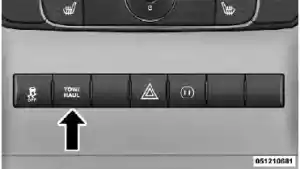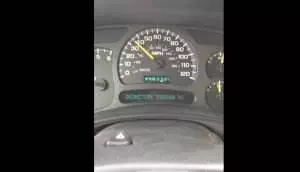In the world of towing vehicles, there is a vehicle recovery technique that has gained popularity: using ratchet straps. These sturdy straps laden with countless potential raise an intriguing question – can you tow a car with ratchet straps? While the idea may seem plausible, it is essential to carefully consider various factors before attempting to rely solely on these simple yet robust tools for the purpose of vehicle towing.
Can You Tow A Car With Ratchet Straps?
Ratchet straps are commonly used in various industries for securing and transporting cargo, but can they be used to tow a car? In this article, we will explore the ins and outs of towing a car with ratchet straps. We will dive into understanding ratchet straps, their strength and durability, the basics of towing with ratchet straps, choosing the right ratchet straps for towing, preparing the vehicle for towing, securing the straps on the towing vehicle, attaching the straps to the car being towed, ensuring proper tension and tightness, safety considerations while towing with ratchet straps, and finally, alternative methods for towing a car.
Understanding Ratchet Straps
What Are Ratchet Straps?
Ratchet straps, also known as tie-down straps, are a type of securing device commonly used in transportation and logistics industries. They are designed to firmly hold objects in place during transit, preventing movement and ensuring the cargo’s safety. Ratchet straps consist of a long, sturdy webbing material, typically made of polyester, and a buckle mechanism known as a ratchet. The ratchet allows for easy tensioning and securing of the straps.
Components of Ratchet Straps
Ratchet straps consist of several key components that work together to provide a secure and reliable means of cargo restraint. These components include the webbing material, ratchet buckle, hooks or anchor points, and various hardware pieces. The webbing material is the main body of the strap, while the ratchet buckle acts as the tensioning mechanism. Hooks or anchor points are used to secure the straps to the cargo and the vehicle.
Types of Ratchet Straps
There are different types of ratchet straps available in the market, each designed for specific purposes. Common types include the endless ratchet strap, J-hook ratchet strap, and flat hook ratchet strap. The endless ratchet strap forms a continuous loop, allowing for versatile securing options. J-hook and flat hook ratchet straps, on the other hand, have hooks attached to the ends of the straps, providing easy attachment to anchor points.
The Strength and Durability of Ratchet Straps
Weight Capacity of Ratchet Straps
Ratchet straps come with different weight capacities, ranging from a few hundred pounds to several thousand pounds. It is crucial to choose ratchet straps with a weight capacity that exceeds the weight of the vehicle being towed. Overloading the straps can lead to catastrophic failure and compromise the safety of the towing operation.
Factors Affecting the Strength and Durability
Several factors can affect the strength and durability of ratchet straps. The quality of the webbing material, stitching, and hardware components plays a significant role in determining the strength of the straps. Additionally, exposure to harsh environmental conditions, such as UV rays and extreme temperatures, can degrade the strength and durability of the straps over time. It is essential to regularly inspect and maintain ratchet straps to ensure their reliability.
Importance of Regular Inspection and Maintenance
To ensure the safety of towing with ratchet straps, regular inspection and maintenance are vital. Inspections should include checking for signs of wear, such as fraying or cuts in the webbing material, loose stitching, and damage to the hardware components. Any compromised straps should be promptly replaced to maintain their strength and reliability. Additionally, proper storage and protection from environmental elements can help prolong the lifespan of ratchet straps.
Towing a Car with Ratchet Straps: The Basics
Is it Legal to Tow a Car with Ratchet Straps?
The legality of towing a car with ratchet straps may vary depending on the jurisdiction. It is important to research and familiarize yourself with the local laws and regulations regarding towing before attempting to tow a car with ratchet straps. It is recommended to consult with local authorities or seek professional advice to ensure compliance with the law.
Basic Requirements for Towing with Ratchet Straps
When towing a car with ratchet straps, it is essential to follow a set of basic requirements to ensure a safe and secure towing operation. These requirements include using ratchet straps with adequate weight capacity, positioning the straps in a way that distributes the load evenly, and securely attaching the straps to both the towing vehicle and the car being towed.
Understanding the Limitations of Ratchet Straps
While ratchet straps are effective in securing cargo, they have their limitations when it comes to towing a car. Ratchet straps are primarily designed for static loads and may not be suitable for dynamic towing operations. They may not provide the necessary stability and control required for towing a car at high speeds or through challenging terrain. It is important to consider the towing conditions and choose the appropriate towing method accordingly.
Recommended Speed Limits and Driving Practices
When towing a car with ratchet straps, it is crucial to adhere to recommended speed limits and driving practices. Excessive speed can put stress on the straps, potentially leading to failure or damage. It is advisable to drive at a moderate speed, allowing for smooth acceleration and deceleration. Additionally, maintaining a safe distance from other vehicles and avoiding sudden maneuvers can help ensure a safe and stable towing experience.
Choosing the Right Ratchet Straps for Towing
Considerations for Selecting Ratchet Straps
When selecting ratchet straps for towing a car, several considerations should be taken into account. These include the weight capacity and load limit of the straps, their length and width, the quality and durability of the materials used, and any relevant certifications or compliance with safety standards. Thoroughly researching and understanding the specifications and capabilities of different ratchet straps will help ensure the selection of the most suitable straps for the towing operation.
Weight Capacity and Load Limit
The weight capacity and load limit of ratchet straps are critical factors to consider when towing a car. It is crucial to choose straps that can handle the weight of the vehicle being towed, taking into account any additional weight from accessories or modifications. Exceeding the weight capacity of the straps can result in catastrophic failure and compromise the safety of the towing operation.
Length and Width of Straps
The length and width of ratchet straps play a significant role in their effectiveness for towing. Straps that are too short may not provide enough length to secure the car properly, while straps that are too long may be prone to excessive movement and insufficient tensioning. It is recommended to select straps with an appropriate length and width that allow for proper securing and tensioning without compromising safety.
Quality and Durability
Choosing ratchet straps of high quality and durability is essential for safe and reliable towing. Inferior quality straps may not withstand the stresses and strains of towing, leading to premature failure or damage. It is advisable to opt for reputable brands and products known for their reliability and durability. Investing in high-quality ratchet straps can provide peace of mind and ensure a successful towing operation.
Certifications and Compliance with Safety Standards
When selecting ratchet straps for towing, it is important to consider any relevant certifications and compliance with safety standards. Certifications such as the Web Sling and Tie Down Association (WSTDA) standards or the Working Load Limit (WLL) certification can indicate that the straps have undergone rigorous testing and meet recognized safety standards. Choosing certified and compliant ratchet straps is crucial for ensuring the safety of the towing operation.
Preparing the Vehicle for Towing
Checking the Brakes, Tires, and Suspension
Before towing a car with ratchet straps, it is essential to thoroughly inspect the vehicle’s brakes, tires, and suspension. Ensuring that the brakes are in good working condition will provide the necessary stopping power during the towing operation. Checking the tires for proper inflation, tread wear, and any signs of damage is crucial for maintaining stability and traction. Additionally, inspecting the suspension for any issues or abnormalities can prevent unnecessary stress on the ratchet straps during towing.
Ensuring Proper Hitch and Tow Points
A strong and reliable hitch and tow points are essential for safe and secure towing with ratchet straps. The hitch, or towing attachment, should be properly rated for the weight of the car being towed, and securely mounted to the towing vehicle. Similarly, the tow points on the car being towed should be inspected for strength and suitability. It is recommended to consult the vehicle’s owner’s manual or seek professional assistance to ensure proper hitch and tow point selection and installation.
Optimizing Weight Distribution
Proper weight distribution is crucial for maintaining stability and control during towing. When using ratchet straps, it is important to evenly distribute the weight of the car being towed. Placing excessive weight on one side or at the rear of the vehicle can lead to imbalances and compromise towing safety. It is advisable to consult the towing vehicle’s manual or seek professional guidance to determine the optimal weight distribution for the specific towing operation.
Securing the Straps on the Towing Vehicle
Locating Suitable Anchor Points
Before securing the straps on the towing vehicle, suitable anchor points must be identified. Anchor points can include existing attachment points, such as trailer hitches or tie-down loops, or additional hardware specifically designed for securing ratchet straps. It is important to choose anchor points that are strong, securely fastened, and capable of handling the tension and forces exerted during towing.
Attaching Mounting Hardware
Once suitable anchor points have been identified, the next step is attaching the necessary mounting hardware to the towing vehicle. This can include various hardware pieces such as D-rings, O-rings, or S-hooks, depending on the specific anchor points and straps being used. Proper installation and secure attachment of the mounting hardware are vital to ensure the effectiveness and reliability of the ratchet straps during towing.
Proper Placement and Orientation
After the mounting hardware is in place, the ratchet straps should be properly positioned and oriented for secure attachment. The straps should be positioned in a way that minimizes interference with other vehicle components and maximizes tensioning capabilities. Orientation, such as the direction of the strap’s webbing and the placement of hooks or anchor points, should be optimized for optimal strength and securing.
Attaching the Straps to the Car Being Towed
Identifying Secure Attachment Points
When attaching the straps to the car being towed, it is important to identify secure attachment points that can handle the tension and forces exerted during towing. Common attachment points include sturdy frame sections, tow hooks, or designated tie-down points specified by the vehicle manufacturer. Attaching the straps to secure sections of the car will help ensure a safe and reliable towing operation.
Looping the Straps Around Secure Sections
To attach the ratchet straps to the car being towed, the straps should be looped around the identified secure sections. Care should be taken to avoid damaging any delicate or vulnerable components, such as body panels or exhaust pipes. Looping the straps properly and securely around the secure sections will provide a solid anchor point for the towing operation.
Avoiding Damage to the Car
When attaching the ratchet straps to the car being towed, it is important to take precautions to avoid causing any damage. Excessive tension, sharp edges on the straps or hooks, or improper placement can result in scratches, dents, or other damage to the car’s exterior or interior. It is advisable to use protective pads or fabric sleeves to prevent direct contact between the straps and the car’s surfaces.
Ensuring Proper Tension and Tightness
Adjusting the Ratchet Mechanism
Proper tension and tightness of the ratchet straps are crucial for secure and safe towing. Adjusting the ratchet mechanism allows for precise tensioning. The ratchet should be operated according to the manufacturer’s instructions to achieve the desired level of tension. Care should be taken to avoid over-tightening, as this can strain and potentially damage the straps or the towing and towed vehicles.
Properly Applying Tension
When applying tension to the ratchet straps, it is important to do so gradually and evenly. Applying tension too quickly or unevenly can lead to imbalances or sudden jolts that can compromise the stability of the towing operation. A gradual and uniform application of tension will provide a controlled and secure towing experience.
Avoiding Over-tightening or Under-tightening
Over-tightening or under-tightening the ratchet straps can have adverse effects on the safety and effectiveness of the towing operation. Over-tightening can put excessive stress on the straps, potentially causing them to fail or damage the towing and towed vehicles. Under-tightening can result in insufficient tension, leading to movement and instability during towing. It is crucial to find the right balance and ensure that the straps are appropriately tensioned for a secure and safe towing experience.
Safety Considerations While Towing with Ratchet Straps
Towing a car with ratchet straps requires adhering to specific safety considerations to ensure the well-being of those involved and the safe completion of the towing operation. These considerations include regularly inspecting the straps for signs of wear or damage, maintaining appropriate speed limits and driving practices, and being mindful of potential hazards or risks on the road. Regular maintenance, proper preparation, and cautious driving can greatly enhance the safety and success of towing with ratchet straps.
Alternative Methods for Towing a Car
While ratchet straps can be a reliable option for towing a car, there are alternative methods available for different towing situations. Tow straps or chains can provide a robust and versatile means of towing, especially in off-road or heavy-duty applications. Wheel lift systems or dollies can be used to lift and tow the car without putting strain on the wheels or suspension. In some cases, considering professional towing services may be the most appropriate and safest option, especially for complex or specialized towing needs.
In conclusion, towing a car with ratchet straps is possible under certain conditions and with careful consideration of various factors. Understanding the basics of ratchet straps, their strength and durability, and the proper procedures for towing with ratchet straps is crucial for a safe and successful towing operation. By choosing the right ratchet straps, preparing the vehicles properly, securing the straps adequately, and ensuring proper tension and tightness, you can confidently tow a car using ratchet straps. However, it is important to always prioritize safety and to consider alternative methods or professional towing services when necessary.


